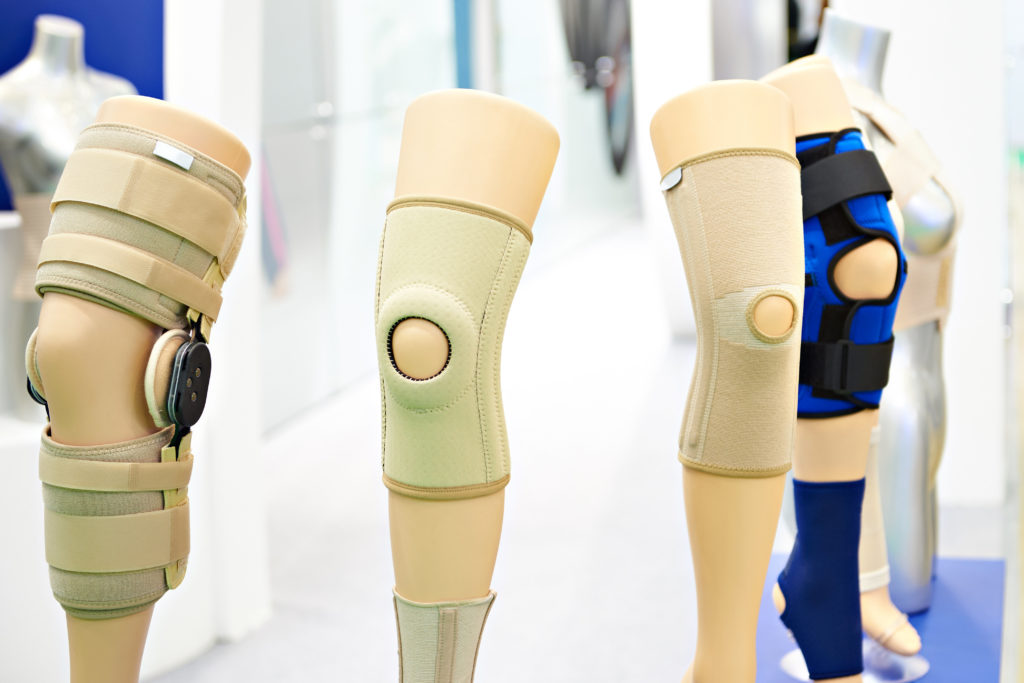Knee braces are used both for the prevention of and treatment of conditions at the knees. These knee orthotics are important for that extra needed support at the knee, whether it’s from instability secondary to a dislocation or to reduce the pain at the knee.
Knee braces can be custom-made or available off the shelf. A knee brace should feel comfortable and provide the level of support necessary based on individualized needs.
Parts of a knee brace
Typically a brace comprises a superstructure, a hinge, and a strap system. which extends up and down and attaches to the Hinge through which movement occurs and the strap system ensures that the brace is secured onto the limb.
Knee braces will have this general appearance; they will either look like, knee sleeves, wraparounds, or Hinged knee braces.
Do you need to see a Paediatric orthopaedic surgeon?
Types of knee braces
The American Academy of orthopedic surgeons classifies knee braces into several groups which are;
- Prophylactic braces or protective braces. They are designed to protect the knees from injury, especially during athletic activity.
They have been documented to be effective at protecting against injury to the medial collateral ligament which is the ligament on the inner aspect of your knee and the anterior cruciate ligament (ACL).
- Functional braces are used following an injury. They reduce instability at the knee joint as the ligaments, tendons, and bones around the knee continue to heal.
These will reduce translation and rotational forces around the knee following injury to the ligaments
- Rehabilitative braces allow controlled and protected motion around the knee as you go through the rehabilitative process.
- Patellofemoral braces were mostly designed to improve patella tracking and treat anterior knee pain which is thought to stem from instability at the patellofemoral joint.
Another classification

These types are classified as levels depending on how much protection they offer
The level of protection ranges from 1 to 3.
- Level 1 brace; This one offers the least amount of support but is the most flexible, such as a knee sleeve. It’s best for pain relief and mild to moderate support when remaining fully active.
- Level 2 braces; A level 2 brace offers more protection than level 1, they allow for a range of movement though are not as flexible.
Examples in this category are Wrap-around braces and knee straps. You’ll receive mild to moderate knee support for pain relief associated with ligament instabilities and tendonitis.
- A level 3 brace offers you the most support but limited movement, an example here is a hinged knee brace.
This type of brace is also generally heavier. It’s best for recovering from surgery when knee movement should be limited to prevent reinjuring yourself.
- Patella braces can be either closed or open patella braces. An open patella has a hole in the center of the brace and a closed patella does not have any holes.
Braces with an open patella allow relief of knee pressure and extra knee cap support with proper movement and tracking.
Closed patella braces, on the other hand, offer compression at the knee cap with the same pressure as the rest of the knee and additional support.
Ask your doctor if you are unsure which is a better option for your needs.
How to wear a knee brace
Depending on the conditions you are managing, some braces will be designed to be worn all the time while others are to be worn for a certain time only like those worn by athletes during sporting activities.
It would be best to get the longest brace as you choose one. For the first time, with the guidance of the technician or your doctor, slide on the brace right over your skin and then use the straps to secure it in place.
Do not make the straps too tight to prevent interference in circulation(blood flow) to the leg. If acceptable try to move around with the brace first to get a feel.
It is best to have the brace right over your skin to allow as much compression at the knee as possible and to also prevent it from slipping over the clothes.
Always ensure that the brace is rightly strapped or tightened to prevent injury. Braces tend to migrate (mostly downwards) therefore it is important to do accurate sizing since it improves effectiveness.
In conclusion, knee braces are essential in the management of knee problems even though some scientific studies show controversial results.
These braces are prescribed by your doctor and can be custom-made or off the shelf. Wearing them can provide more stability at the knee joint.
